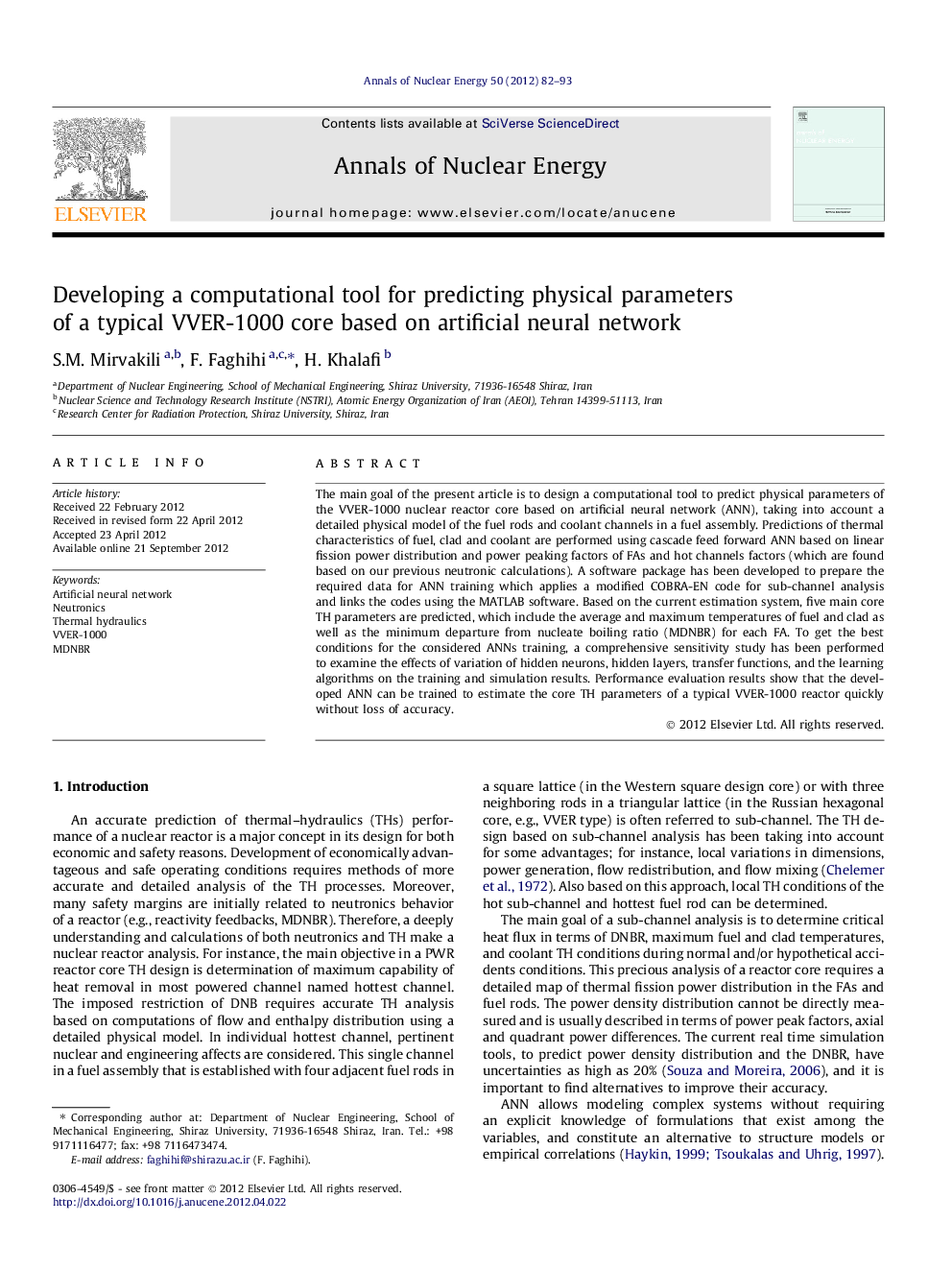| Article ID | Journal | Published Year | Pages | File Type |
|---|---|---|---|---|
| 1728812 | Annals of Nuclear Energy | 2012 | 12 Pages |
The main goal of the present article is to design a computational tool to predict physical parameters of the VVER-1000 nuclear reactor core based on artificial neural network (ANN), taking into account a detailed physical model of the fuel rods and coolant channels in a fuel assembly. Predictions of thermal characteristics of fuel, clad and coolant are performed using cascade feed forward ANN based on linear fission power distribution and power peaking factors of FAs and hot channels factors (which are found based on our previous neutronic calculations). A software package has been developed to prepare the required data for ANN training which applies a modified COBRA-EN code for sub-channel analysis and links the codes using the MATLAB software. Based on the current estimation system, five main core TH parameters are predicted, which include the average and maximum temperatures of fuel and clad as well as the minimum departure from nucleate boiling ratio (MDNBR) for each FA. To get the best conditions for the considered ANNs training, a comprehensive sensitivity study has been performed to examine the effects of variation of hidden neurons, hidden layers, transfer functions, and the learning algorithms on the training and simulation results. Performance evaluation results show that the developed ANN can be trained to estimate the core TH parameters of a typical VVER-1000 reactor quickly without loss of accuracy.
► Thermal–hydraulics parameters of a VVER-1000 core based on neural network (ANN), are carried out. ► Required data for ANN training are found based on modified COBRA-EN code and then linked each other using MATLAB software. ► Based on ANN method, average and maximum temperature of fuel and clad as well as MDNBR of each FA are predicted.
